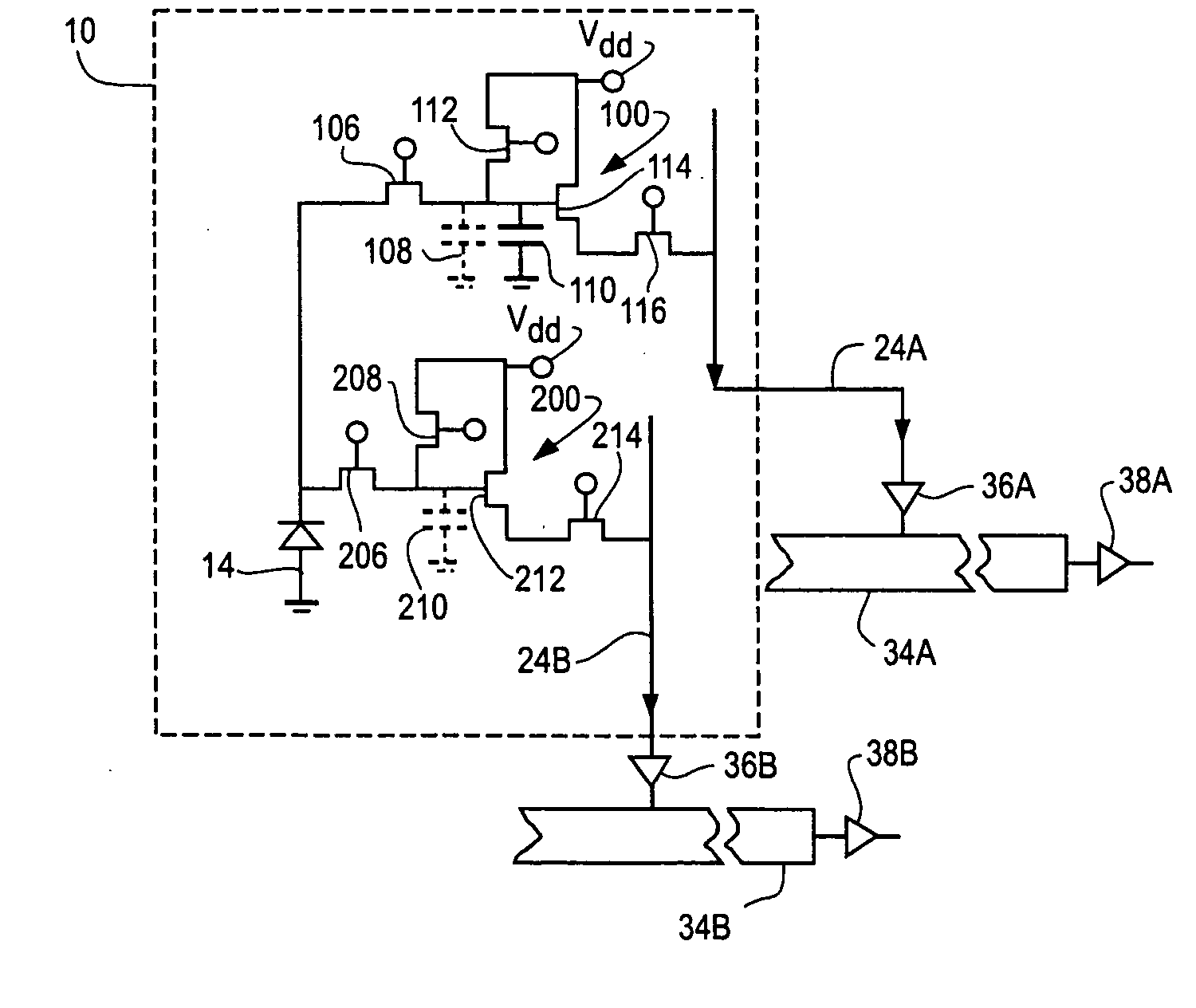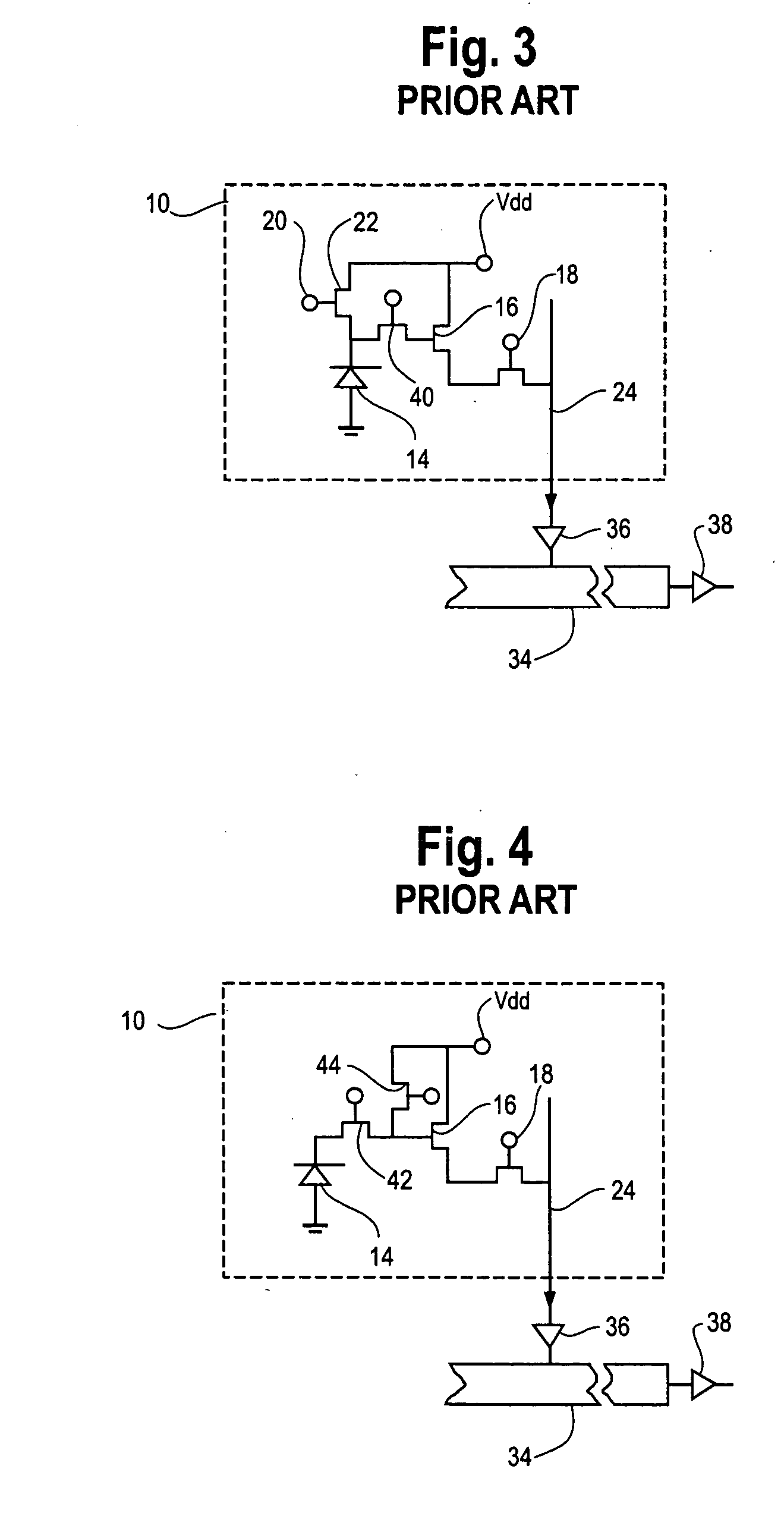Hybrid infrared detector array and CMOS readout integrated circuit with improved dynamic range
a detector array and integrated circuit technology, applied in the field of solid-state electronic image sensors, can solve the problems of high volume commercial grade cmos imaging products, sensor characteristics close to those of ccd, and high cost and complexity of silicon ccd manufacturing processes, and achieve low dynamic range, high signal-to-noise ratio, and high gain
- Summary
- Abstract
- Description
- Claims
- Application Information
AI Technical Summary
Benefits of technology
Problems solved by technology
Method used
Image
Examples
Embodiment Construction
[0083] Before describing hybrid infrared detector array embodiments, a description is set forth of presently preferred CMOS imaging arrays which are suitable for the CMOS dual amplifier readout integrated circuit portion of a hybrid detector array. The inventive methods and devices are applicable to other CMOS imaging array designs and the following descriptions are offered by way of illustration and not limitation. A disclosure of methods for detecting moving objects in a scene is also provided which can be used with the hybrid infrared detector array.
[0084] An improved CMOS imaging array is described below comprising a plurality of individual pixels arranged in an array of rows and columns of individual pixels. The number of pixels can vary, but embodiments of 25 and 50 million pixels are considered exemplary. Each pixel in the plurality of individual pixel sensors is preferably the same. A representative example of the CMOS pixel sensor 10 is shown in FIG. 5A. In this embodiment...
PUM
 Login to View More
Login to View More Abstract
Description
Claims
Application Information
 Login to View More
Login to View More - R&D
- Intellectual Property
- Life Sciences
- Materials
- Tech Scout
- Unparalleled Data Quality
- Higher Quality Content
- 60% Fewer Hallucinations
Browse by: Latest US Patents, China's latest patents, Technical Efficacy Thesaurus, Application Domain, Technology Topic, Popular Technical Reports.
© 2025 PatSnap. All rights reserved.Legal|Privacy policy|Modern Slavery Act Transparency Statement|Sitemap|About US| Contact US: help@patsnap.com



